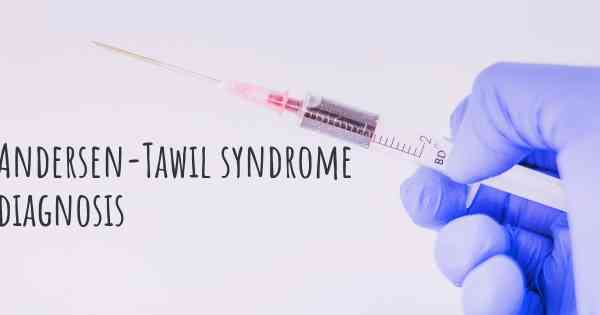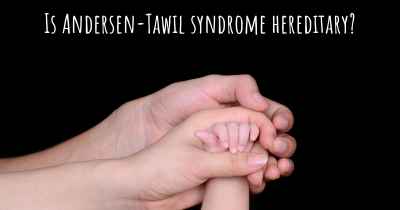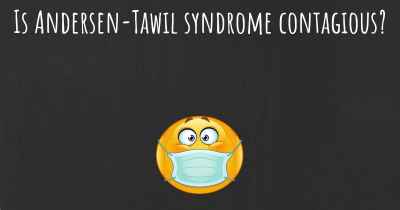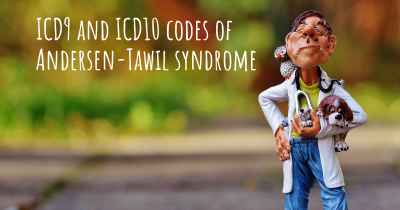How is Andersen-Tawil syndrome diagnosed?
See how Andersen-Tawil syndrome is diagnosed. Which specialists are essential to meet, what tests are needed and other useful information for the diagnosis of Andersen-Tawil syndrome

Andersen-Tawil syndrome (ATS) is a rare genetic disorder that affects multiple systems in the body, including the muscles, heart, and nervous system. It is characterized by a triad of symptoms, which include periodic paralysis, cardiac arrhythmias, and distinctive physical features. Diagnosing ATS can be challenging due to its rarity and the variability of symptoms among affected individuals. However, there are several key steps and diagnostic tools that healthcare professionals utilize to identify and confirm the presence of ATS.
Medical History and Physical Examination
The diagnostic process for ATS typically begins with a thorough medical history and physical examination. The healthcare provider will inquire about the patient's symptoms, family history, and any other relevant information. It is important to mention any episodes of muscle weakness or paralysis, heart rhythm abnormalities, and any physical characteristics associated with ATS, such as a small jaw, low-set ears, or a prominent forehead.
Electrocardiogram (ECG)
An electrocardiogram (ECG) is a crucial diagnostic tool used to evaluate the electrical activity of the heart. In individuals with ATS, ECG findings may reveal specific abnormalities, such as prolonged QT intervals or ventricular arrhythmias. These findings can help differentiate ATS from other cardiac conditions and guide further diagnostic investigations.
Genetic Testing
Genetic testing plays a pivotal role in diagnosing ATS. It involves analyzing the individual's DNA to identify any mutations or alterations in specific genes associated with ATS. The most common genetic cause of ATS is a mutation in the KCNJ2 gene, which encodes a potassium channel protein involved in muscle and cardiac function. Genetic testing can be performed using various techniques, including targeted gene sequencing, whole exome sequencing, or specific mutation analysis.
Electromyography (EMG)
Electromyography (EMG) is a diagnostic procedure that evaluates the electrical activity of muscles and nerves. It can help assess the presence and severity of muscle dysfunction in individuals with ATS. During an EMG, small electrodes are inserted into the muscles, and the electrical signals generated by muscle contractions are recorded. Abnormal EMG findings, such as myotonic discharges or muscle membrane instability, can provide supportive evidence for an ATS diagnosis.
Provocative Testing
Provocative testing is often employed to induce and assess the characteristic symptoms of ATS. One commonly used test is the intravenous potassium challenge. This involves administering a controlled infusion of potassium chloride while closely monitoring the patient's cardiac rhythm and muscle function. In individuals with ATS, the potassium challenge may trigger episodes of muscle weakness or paralysis and reveal abnormal cardiac responses.
Family History and Clinical Criteria
Family history can be a valuable diagnostic clue for ATS. The condition is typically inherited in an autosomal dominant manner, meaning that an affected individual has a 50% chance of passing the mutated gene to each of their children. Therefore, identifying a family history of periodic paralysis, cardiac arrhythmias, or distinctive physical features can raise suspicion for ATS. Additionally, clinical criteria, such as the presence of specific symptoms and physical characteristics, can aid in the diagnosis.
Collaboration with Specialists
Given the complexity of ATS, a multidisciplinary approach involving various specialists is often necessary for an accurate diagnosis. These may include neurologists, cardiologists, geneticists, and other healthcare professionals with expertise in rare genetic disorders. Collaboration among specialists allows for a comprehensive evaluation of the patient's symptoms, genetic testing interpretation, and the integration of various diagnostic findings.
Conclusion
Diagnosing Andersen-Tawil syndrome requires a combination of clinical evaluation, genetic testing, and specialized diagnostic procedures. The medical history, physical examination, ECG, genetic testing, EMG, provocative testing, family history, and collaboration with specialists all contribute to the diagnostic process. It is important to consult with healthcare professionals experienced in rare genetic disorders to ensure an accurate diagnosis and appropriate management of ATS.








